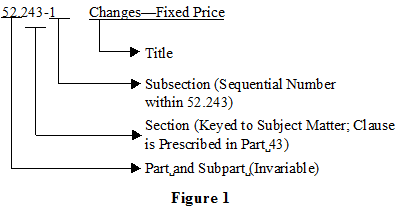Government contracting officials receive detailed training on the FAR. So do employees of some large contractors. But for many others in government contracting, particularly small businesses, there is no formal FAR training. For them, the FAR can seem overwhelming, even scary.
I’m not going to sugarcoat it: the FAR is massive. In print form, which is how I read the FAR early in my career, you’re looking at a veritable brick of a book. You’d undoubtedly get some very nice definition by using copies of the FAR for bicep curls.
But, big as it is, the FAR isn’t quite as impenetrable as it might seem at first glance–especially if you know a few tricks. Here are my top five tips for understanding and using the FAR.
- What the heck is the FAR, anyway?
This is a top-five list, not a legal treatise, so I’m going to oversimplify things just a bit, but federal laws generally fall into two categories: statutes and regulations.
Statutes are the actual words written by Congress. Think Schoolhouse Rock. Statutes are collected in the United States Code. (When you see “U.S.C.” in connection with a government contracting matter, it means the U.S. Code, not the school from Southern California.)
Regulations, on the other hand, are written by entities to whom Congress has delegated certain rulemaking authority–typically, Executive Branch agencies. Regulations are collected in the Code of Federal Regulations, or “C.F.R.” Regulations are subordinate to statutes: if a regulation conflicts with a statute, the statute wins. After all, the will of Congress must trump that of an unelected regulatory body.
“FAR” stands for “Federal Acquisition Regulation.” The FAR is part of the Code of Federal Regulations: Title 48 of the C.F.R., to be precise. While many in government contracting like to use citations such as “FAR 1.105-1,” you can always substitute the word “FAR” with “48 C.F.R.” They mean the same thing! (That is, “48 C.F.R. 1.105-1” is the same thing as “FAR 1.105-1.”) This sometimes can come in pretty handy when you’re using a search engine to find a FAR provision.
Unlike most regulations, the FAR is drafted not by a single agency, but by a body known as the Federal Acquisition Regulatory Council, or “FAR Council.” The FAR Council consists of representatives of the DoD, GSA, and NASA. The FAR Council writes and amends the FAR–sometimes in response to a Congressional directive, sometimes using the FAR Council’s own delegated authority.
2. How do I navigate the FAR?
If you’re new to the FAR–or even a relatively seasoned contractor–you may be put off by the seemingly nonsensical use of numbers, periods and dashes. Why “FAR 1.105-1” and not just “FAR Rule 57?”
Fortunately, the FAR comes with an instruction manual of sorts. FAR 1.105-2 explains how the FAR is organized and what all those numbers mean:
a) General. The FAR is divided into subchapters, parts (each of which covers a separate aspect of acquisition), subparts, sections, and subsections.
(b) Numbering. (1) The numbering system permits the discrete identification of every FAR paragraph. The digits to the left of the decimal point represent the part number. The numbers to the right of the decimal point and to the left of the dash represent, in order, the subpart (one or two digits), and the section (two digits). The number to the right of the dash represents the subsection. Subdivisions may be used at the section and subsection level to identify individual paragraphs.
If you’re a visual learner, FAR 1.105-2 has you covered, too, with this handy-dandy graphic:

FAR 1.105-2 has more information on the organization of the FAR. It’s well worth a read because understanding the FAR’s organization is the best way to learn to quickly find what you need.
In fact, while I would never suggest that anyone read the entire FAR, there is a lot of very useful information in FAR Part 1–everything from understanding agency FAR supplements and deviations to recognizing the authority (and lack of authority!) of certain contracting officials. If you’re a government contractor, you’ll be well-served to read FAR Part 1.
3. What about navigating FAR clauses?
FAR Part 1 provides a roadmap for using the FAR generally, but what about all those FAR clauses that appear in your contracts, like FAR 52.219-14 (Limitations on Subcontracting)? Is there a roadmap to navigating clauses, too?
You bet!
FAR 52.101(b) (also known as “48 C.F.R. 52.101(b)”) explains the numbering system for FAR clauses:
(b) Numbering – (1) FAR provisions and clauses. Subpart 52.2 sets forth the text of all FAR provisions and clauses, each in its own separate subsection. The subpart is arranged by subject matter, in the same order as, and keyed to, the parts of the FAR. Each FAR provision or clause is uniquely identified. All FAR provision and clause numbers begin with “52.2,” since the text of all FAR provisions and clauses appear in subpart 52.2. The next two digits of the provision or clause number correspond to the number of the FAR subject part in which the provision or clause is prescribed. The FAR provision or clause number is then completed by a hyphen and a sequential number assigned within each section of subpart 52.2.
Once again, the FAR’s drafters kindly include a visual aid:

Just like FAR Part 1, understanding how to navigate FAR clauses will be worth your while.
4. Any tips for searching the FAR?
The print edition of the FAR had one big advantage over electronic searches. (Well, two advantages, if you count that bicep toning). If you search for something in a massive book, it’s really helpful to know where in that book to look. Early in my career, if I wanted to find the rules for small business set-asides, I didn’t flip through the FAR randomly, but used the index to guide me to FAR Part 19.
But in the 2020s, most people search the FAR the same way they find out what that long-ago ex-boyfriend is up to these days: internet search engines. Sometimes, this works pretty well: search for “FAR small business set-aside” in Google and FAR 19.5 is the first result. But other times, relying on search engines–without considering the context–can lead you down the wrong path.
Let’s say you’re an IT contractor worried that you might have submitted a competitive proposal too late. What does the FAR say about that? So you Google “FAR late submission,” and the first result is FAR 52.214-7 (Late Submissions, Modifications and Withdrawals of Bids). Question answered, right? Nope: FAR 52.214-7 applies to FAR Part 14 sealed bids, not FAR Part 15 negotiated procurements.
If you had been searching in the print FAR, instead of in Google, you would have ignored FAR Part 14 as irrelevant, and wouldn’t have been misled. In my experience, this is a very common problem: I often hear from clients who show me a FAR clause that they’ve uncovered through an internet search but that does not actually apply to the client’s situation. So how can you avoid this problem–other than being the last person on the planet to own the print FAR?
Here are four suggestions:
- Instead of using your favorite search engine, begin your search on the aquisition.gov website. Here, you can scroll through the FAR index–just like you would in the print volume–to search only the relevant portions of the FAR. That numbering system you learned using FAR Part 1 and FAR 52.101 will come in really handy now, allowing you to quickly find what you need while ignoring the rest.
- If you do use a search engine, use the acquisition.gov index to help determine whether the results are relevant. For example, if you happen upon FAR 14.303, you know (thanks to the FAR Part 1 instruction manual!) that this is a regulation found in FAR Part 14. Cross-check that against the FAR index, and you’ll quickly see that FAR Part 14 covers sealed bidding. If you’re not involved in a sealed bid competition, this isn’t a relevant reference.
- Speaking of cross-checking, when your internet sleuthing uncovers a clause, be sure to compare it against the solicitation or contract. (Remember that FAR clauses always begin with “52.2”). Except in rare cases, a clause does not apply unless it is included in the solicitation or contract.
- If you are bidding on a commercial item solicitation or performing a commercial item contract, keep in mind that many–though not all–of the relevant rules are found in two clauses: FAR 52.212-1 (Instructions to Offerors–Commercial Items) and FAR 52.212-4 (Contract Terms and Conditions–Commercial Items). The answers you’re seeking may well be in one of these clauses.
5. How do I track pending FAR updates?
Let’s end where we began, with our friends at the FAR Council. Contractors often hear about pending FAR updates, like those sometimes mandated by Congress in the annual National Defense Authorization Act. Often, these contractors will ask me what I know about the progress of a particular pending change to the FAR.
I would love to pretend that I am part of some invitation-only Skull-and-Bones-style secret society that meets at remote locations on moonless nights to furtively share the latest FAR gossip. But the much-less-glamorous truth is that I use the FAR Open Case Report, which is available to anyone with an internet connection. The Open Case Report includes a status update on every pending FAR update. Very convenient!
A Few Final Words
Like many in industry, I never received extensive formal training on the FAR–and I was pretty darn intimidated when I began my career and realized that this enormous tome in front of me was the government contracting rulebook.
But once I learned to effectively navigate the FAR, decipher the numbering system, and quickly find relevant information, it became a whole lot easier to use the FAR. I hope these tips will help you do the same.

